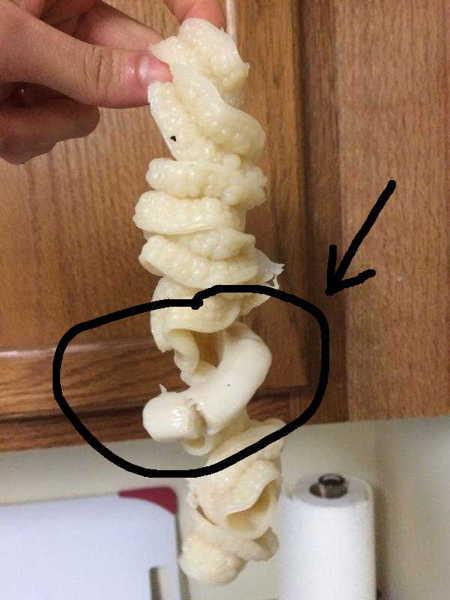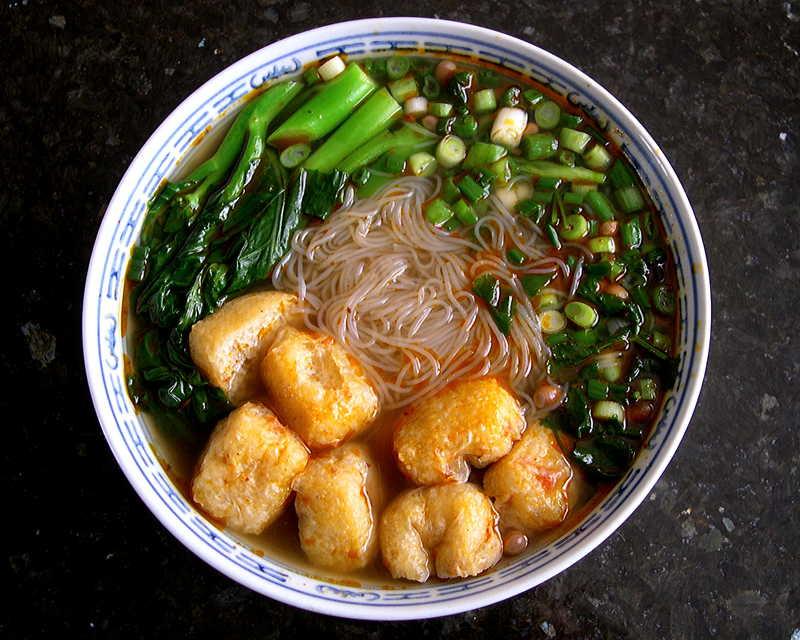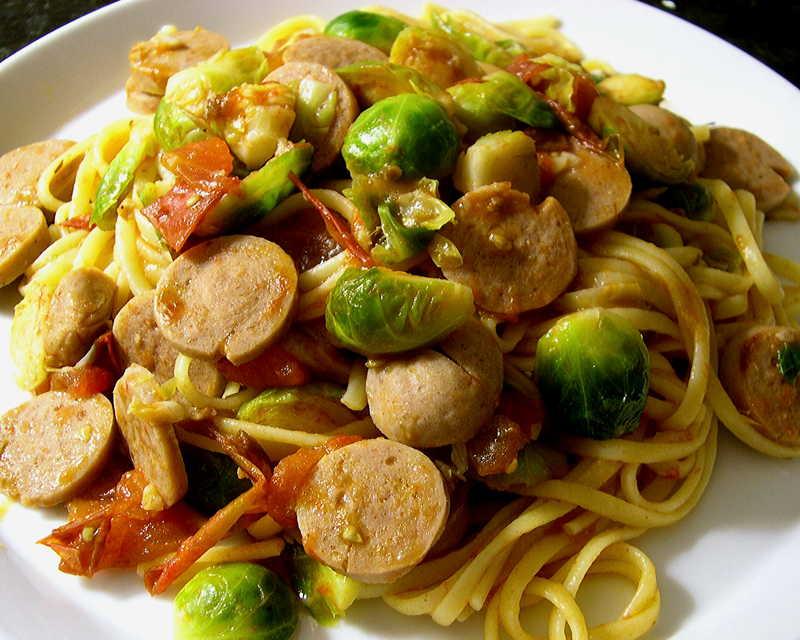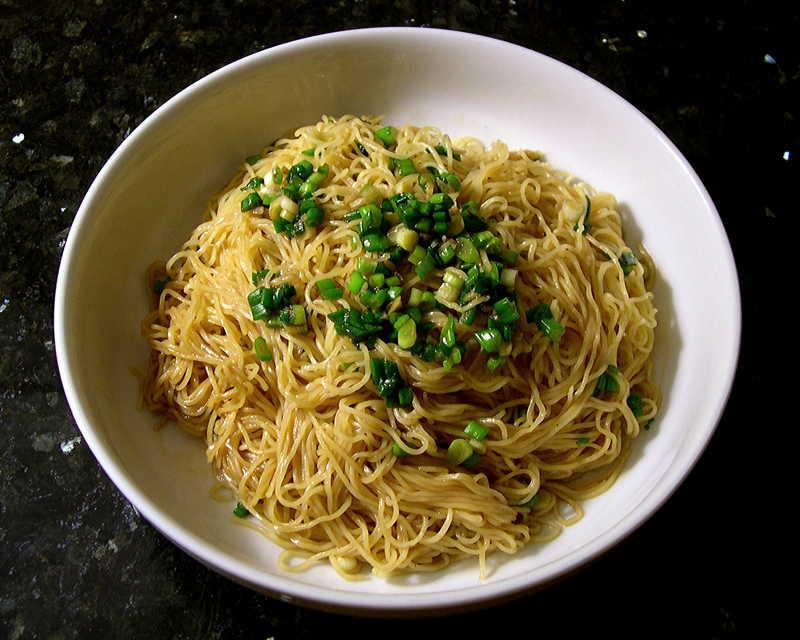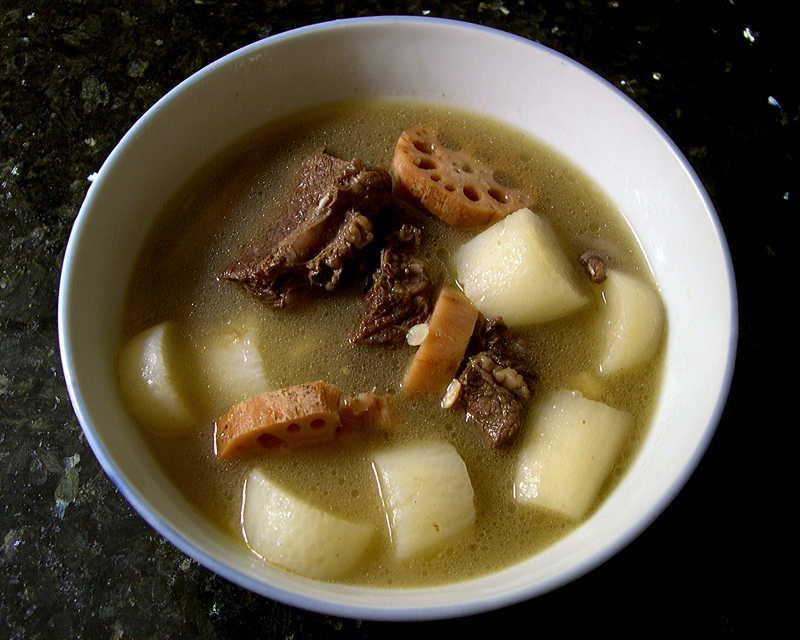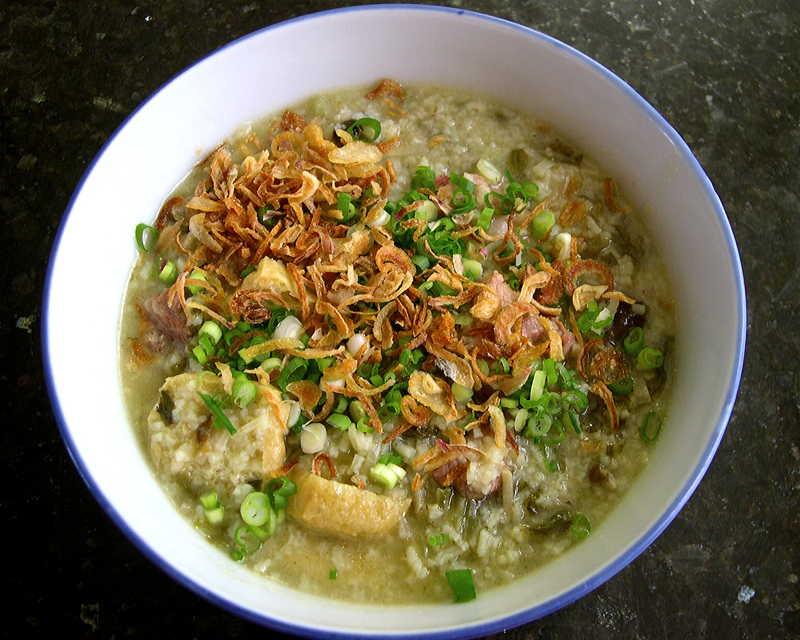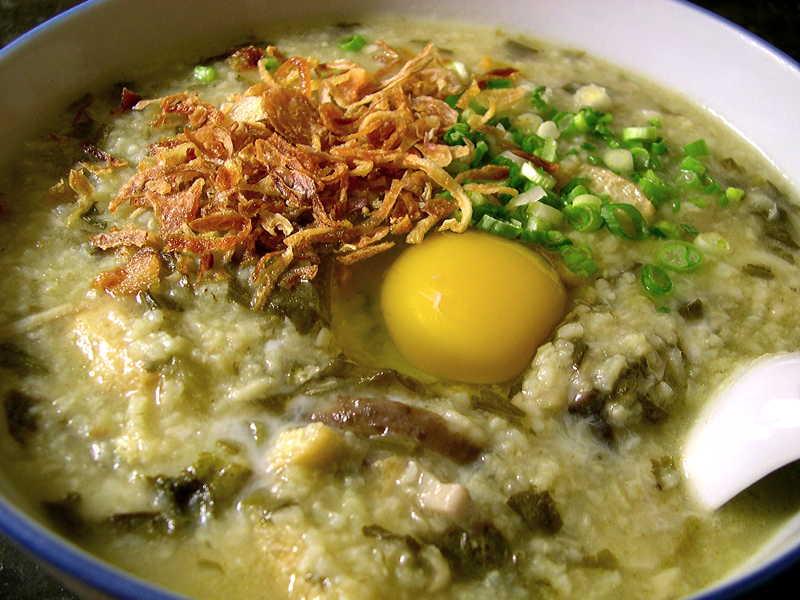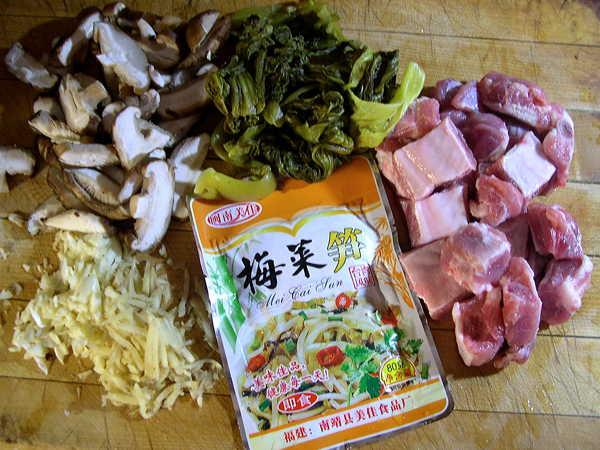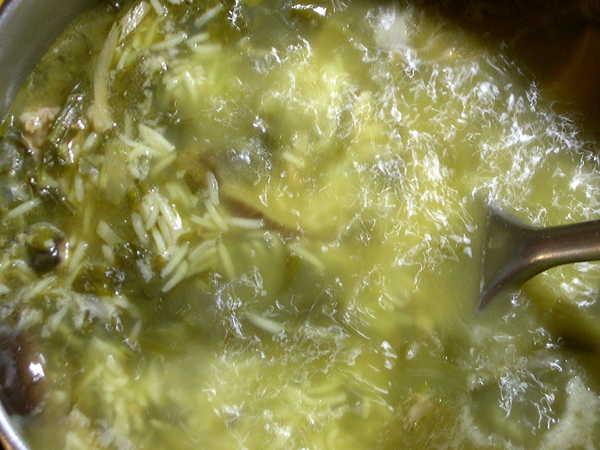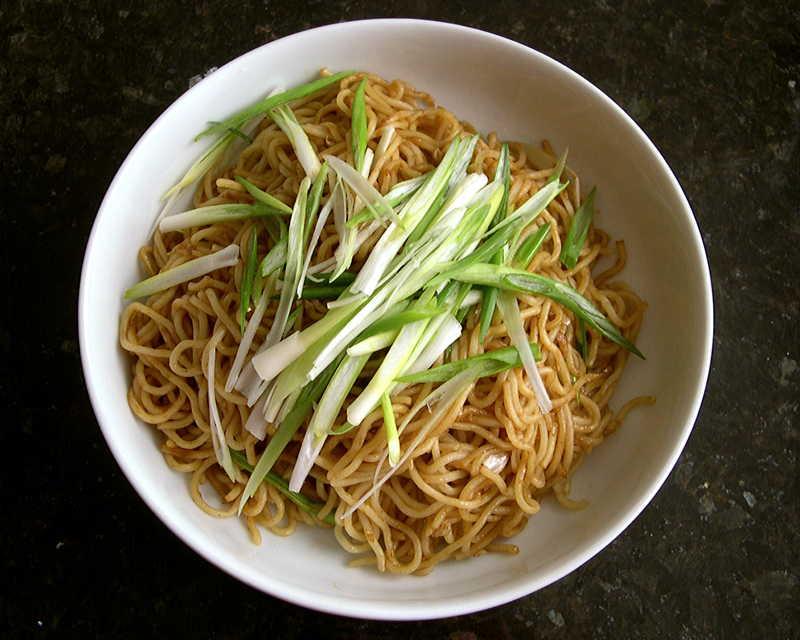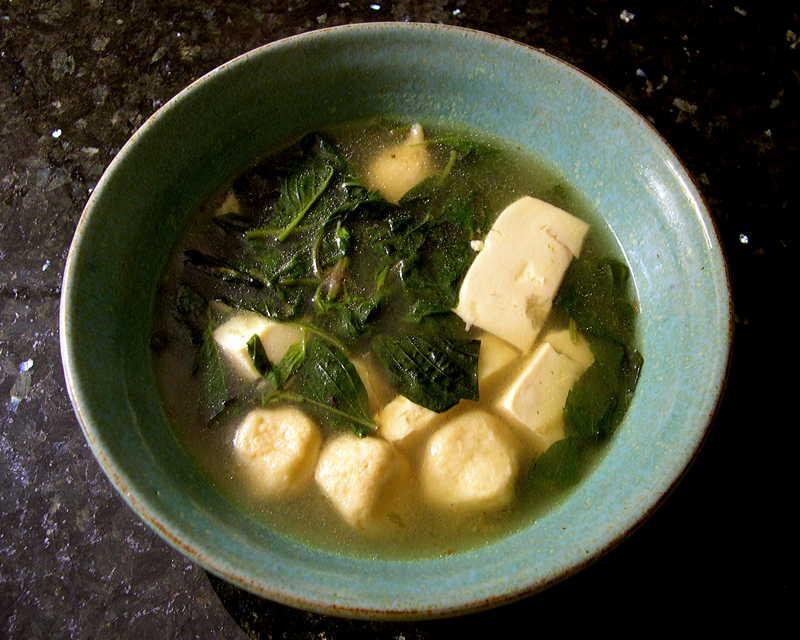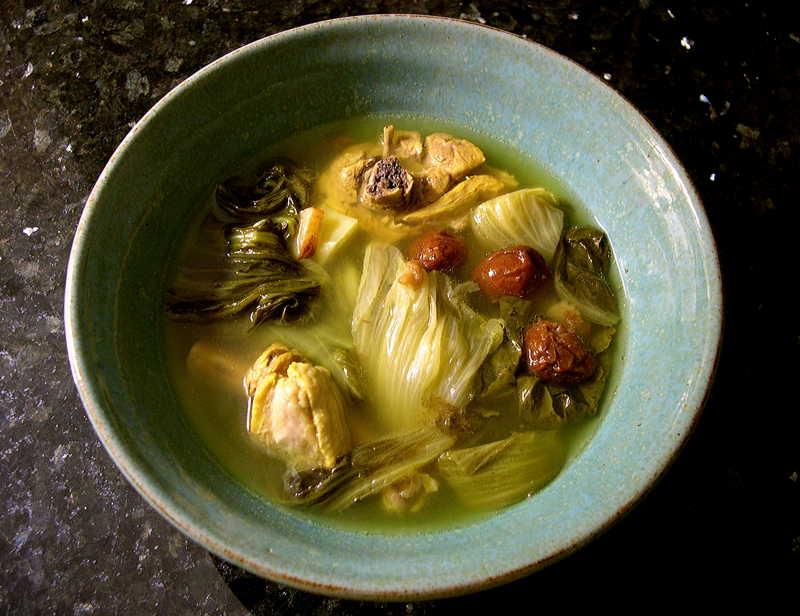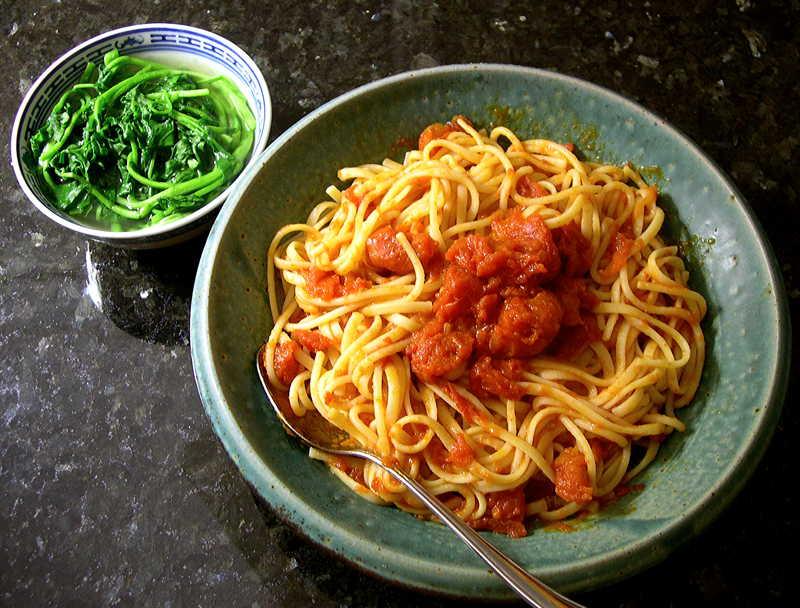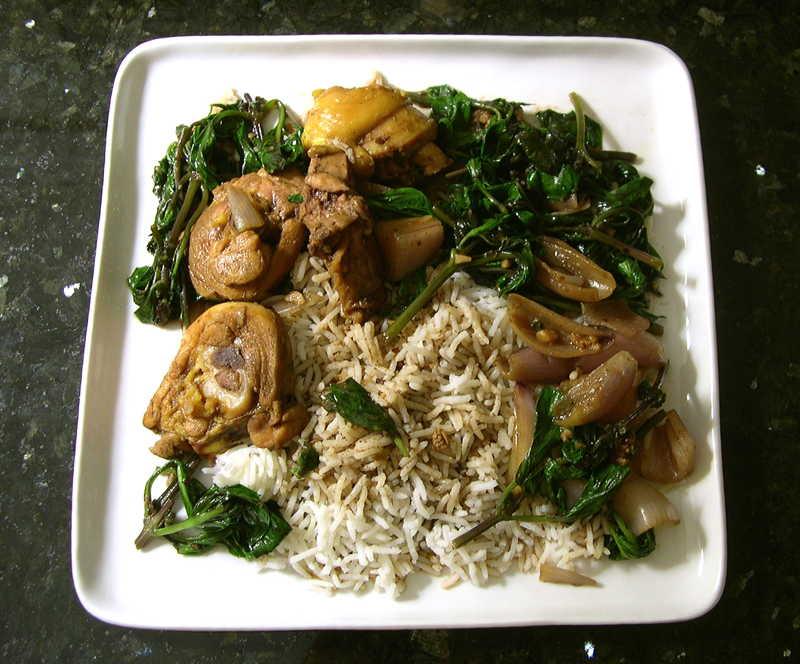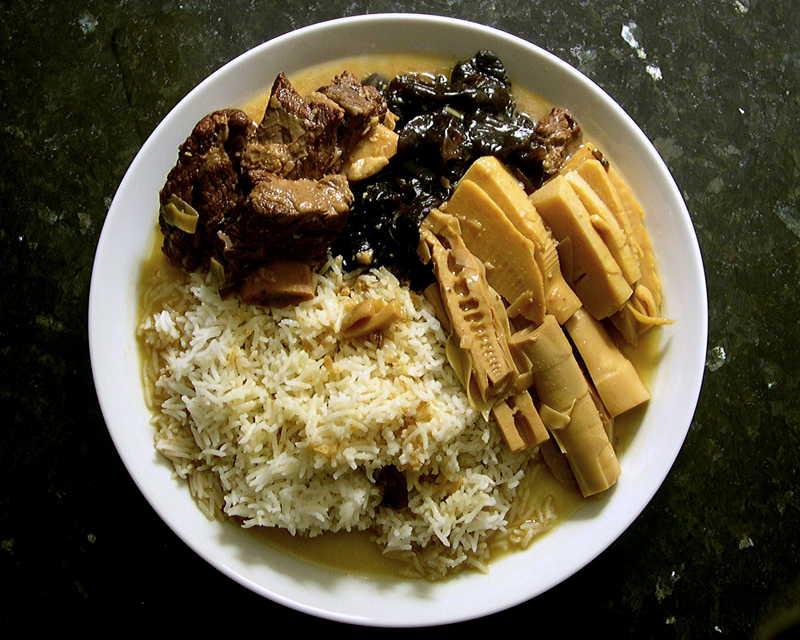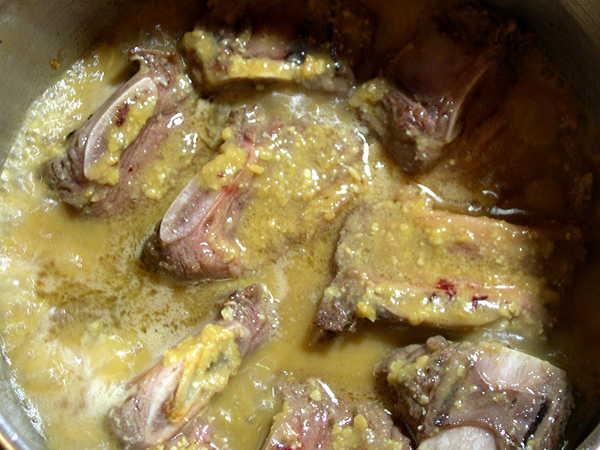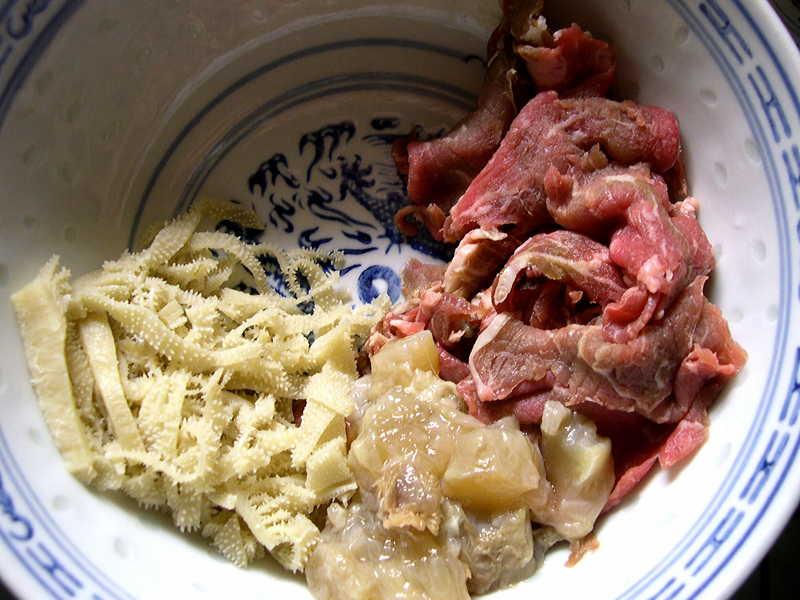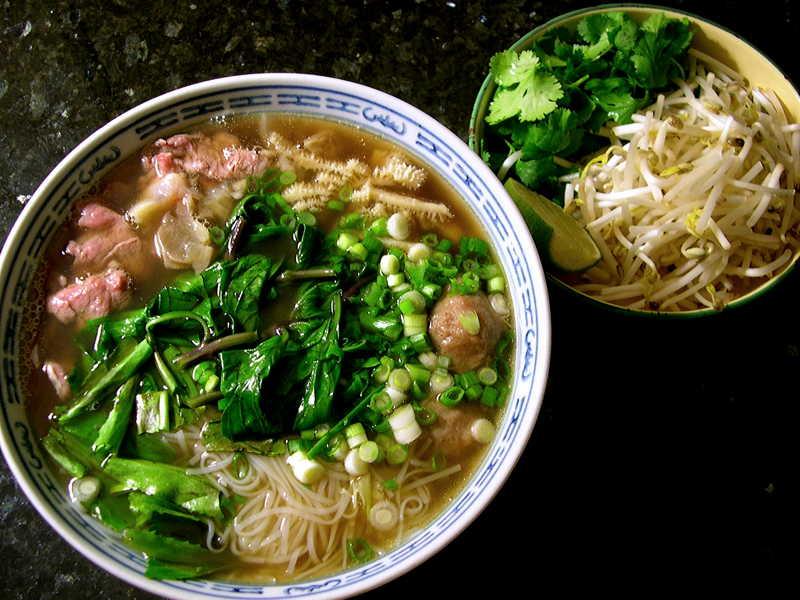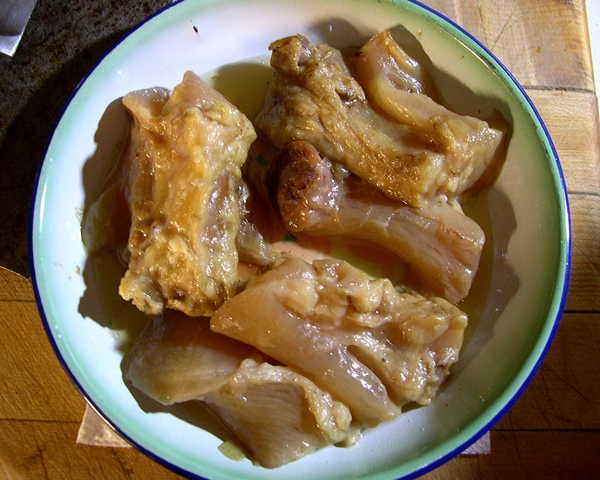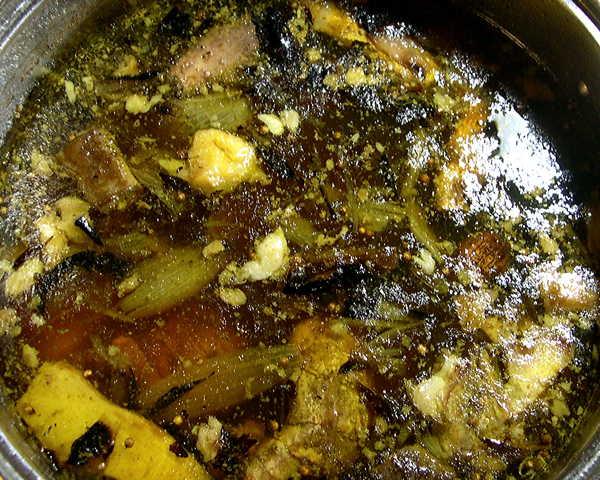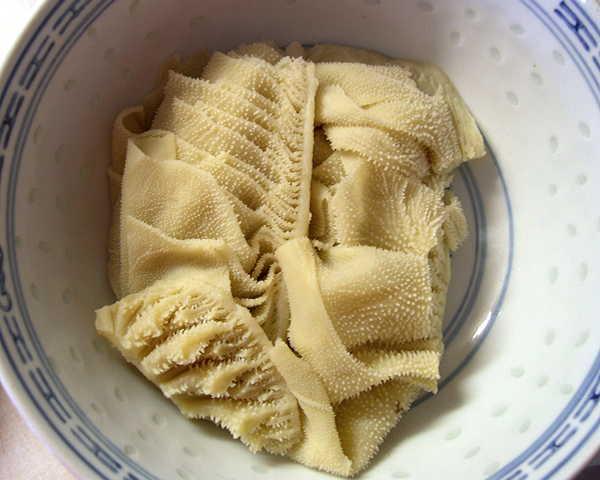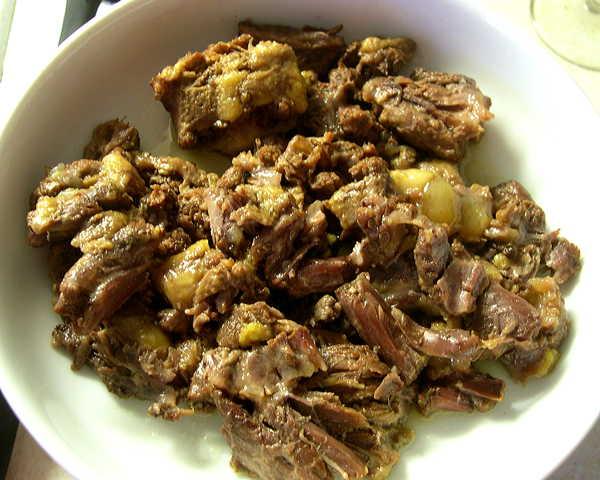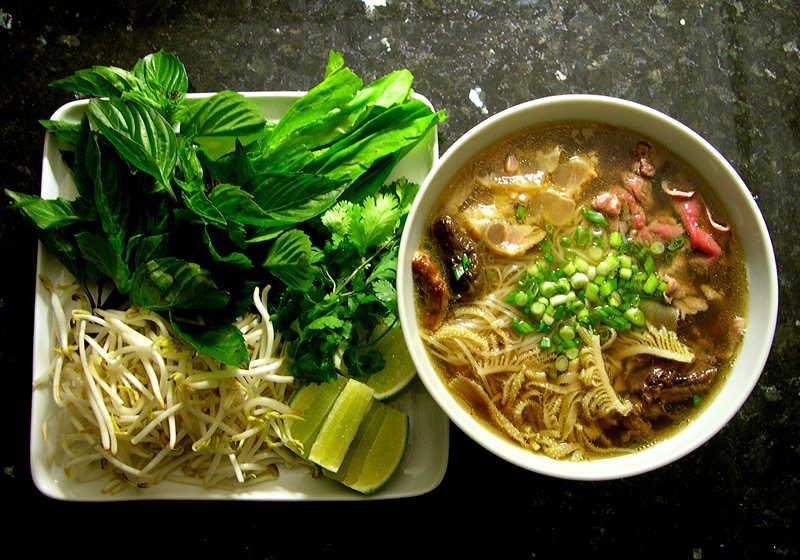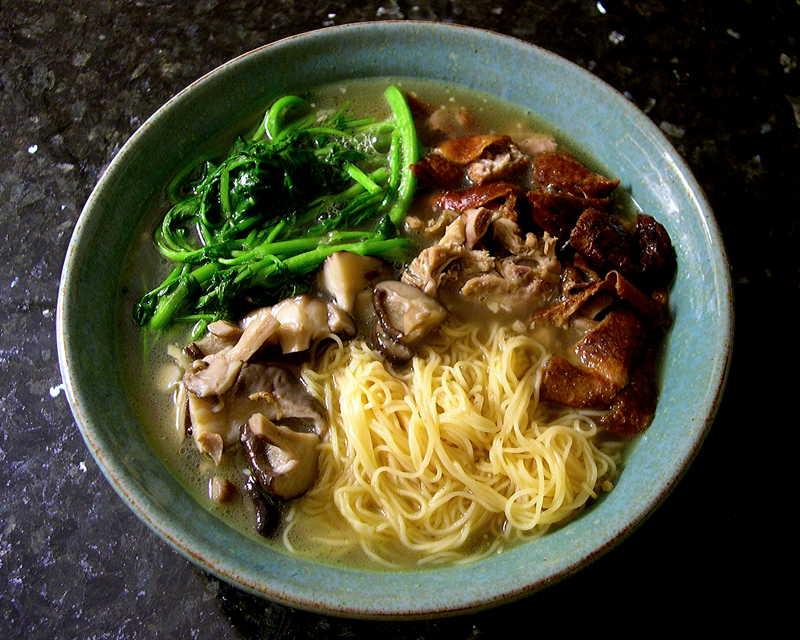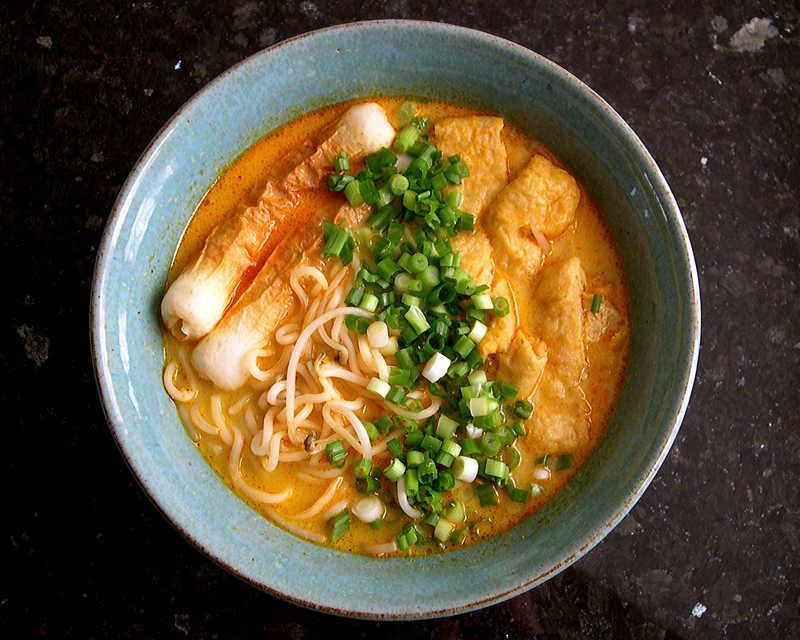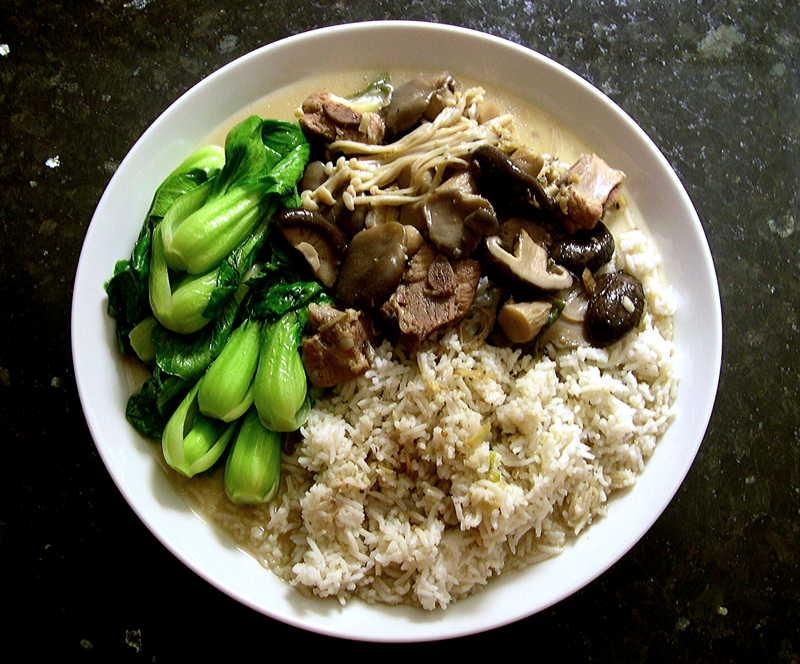-
Posts
3,810 -
Joined
-
Last visited
Content Type
Profiles
Forums
Store
Help Articles
Everything posted by huiray
-
Sorry, I think that involves a bit of scare-mongering. There has been a recent thread here on eG, for that matter, about the unwarranted demonization of goods from China. Look it up.
-
Regarding culinary uses of fresh turmeric - simply use it as the "turmeric ingredient" instead of the more common dry powdered turmeric. (I assume you know that turmeric (both fresh and powdered) is widely used in many dishes in the various cuisines of South, South-East, West Asia; and various cuisines elsewhere too) Some examples of the use of fresh turmeric I've posted about here on eG: http://forums.egullet.org/topic/143989-lunch-whatd-ya-have-2012%E2%80%932014/page-9?p=1916525#entry1916525 (I use powdered turmeric for this dish made at other times when I'm lazy; I've posted those here too) http://forums.egullet.org/topic/143989-lunch-whatd-ya-have-2012%E2%80%932014/page-9?p=1913815#entry1913815 http://forums.egullet.org/topic/146914-lunch-whatd-ya-have-2014/page-2#entry1954047 http://forums.egullet.org/topic/148424-dinner-2014-part-3/page-3?p=1970024#entry1970024 (yes, fresh turmeric was in there) http://forums.egullet.org/topic/148945-dinner-2014-part-4/page-20#entry1984287 (scroll down) http://forums.egullet.org/topic/149363-dinner-2014-part-5/page-11?p=1989178#entry1989178 http://forums.egullet.org/topic/149363-dinner-2014-part-5/page-8?p=1987829#entry1987829 Others here have also posted about their use of fresh turmeric. Hmm, now I have a slight yen for making nasi kunyit...or maybe some turmeric fried rice...both of which are common rice dishes in SE Asia...
-
Note what cyalexa said - "The smooth surface is on the outside of the tube. Your item looks like a tube spit along its length and sort of turned inside out." Your pic shows part of the un-inverted tube, circled below: Google image sets for: Pig uterine horns Pig 'fallopian tubes" Note the interior of the cut-up tubes. 生腸 I believe you said you had already googled "pig uterus".
-
But of course. Note the double quotes i had placed around "fallopian tubes". (Perhaps you missed that)
-
Sorry, but this makes zero sense to me. Zero. OF COURSE the various sized cloves can be used. All in the same dish, too. I also really wonder about what the f*ck this person is buying or what she is expecting of an ingredient. If she is looking for enormous, evenly-sized cloves (for whatever reason) then she needs to buy the appropriate type rather than summarily dismiss all fresh stuff. I think this is a greatly overreaching statement. ( I assume you meant to say "wary") ------------ I can't remember the last time I bought pre-peeled garlic cloves. And I use a lot of garlic. Peeling them is very easy IMO, you just need to acknowledge that you will get the smell of garlic on your fingers/hand for a little while. I buy fresh heads of garlic, "locally grown", various varieties (which I have documented elsewhere here on eG too) by the dozens and more when in season. I will say that their quality varies from grower to grower, with many heads that I got from a particular vendor the past year (2014) turning out to be worm-infested even though they looked beautiful at first blush.** They were also NOT CHEAP. "General Supermarket American garlic" by the head is usually fine - again, I have no issues or problems with peeling them. Ditto Chinese garlic, the stuff often sold in Chinese groceries - you just select the ones that are firm etc etc - tastewise --- eh, they're not THAT different for my uses since they get thrown into many dishes with various other seasonings in them and I hardly ever use garlic as a RAW component where the taste of it matters much more. Also again, I don't see what the problem is with peeling them. You just need to use the appropriate technique. ** I mentioned to them about my observations and experience with their produce. One of them express a minimal amount of regret and offered me ONE replacement head of garlic. Others at that stall seemed to avoid meeting my gaze on next visit.
-
Yes. It should work with the OP's ramekins, with that protruding flange (although rounded) around the top of the bowl/ramekin, as the hooks of the calipers/tongs will grasp under the flange and also gain the benefit of the top of the ramekin being wider than the point at which the tong hooks are grasping the ramekin. So long as one maintains a good strong hand grip/pressure while lifting and the contents are not too heavy. I've had mine for a very long time with frequent use made of them. As for "quality" and whatnot, well, they've lasted me something like 20 years or so (or more) - but then I try to treat and use my utensils with due care. I suppose the reactions here though suggest that folks might be inclined to use something else, even for uses such as those (like lifting plates with clear, defined (slightly overhanging) rims that this implement was designed for, and which you and I use it for. :-)
-
Pig "fallopian tubes" (生腸), as they are popularly called, largely split lengthwise and cleaned up. ETA: They would correspond with those "long uterine horns" that cyalexa referred to above.
-
Some recent meals. "Hot & Spicy Flavor Instant Vermicelli" [Guangyou brand] augmented w/ tau pok, kai-lan, chopped scallions, trimmed coriander leaves. Linguine [Rustichella d'Abruzzo] tossed in the pan with a sauce mix made by sautéeing garlic in oil, adding trimmed semi-peeled-back Brussels sprouts, browning a bit, then chopped Kumato tomatoes, cooking down, adding sliced Weisswurst [Claus' German Sausage & Meats] w/ the casing removed, some dried thyme and cooking a bit more (seasoning adjusted) before adding the linguine.
-
dcarch basically answered the question for you. (Thanks, dcarch) I've never seen fresh lotus root as WHITE white. They are, at palest, a cream or light tan/beige color. Sometimes darker. (The skin is darker (a light brown usually) than the insides) When cooked, especially with longer cooking times, they usually turn darker and do take up to an extent the color of the sauces/liquid it is cooking in, yes. All the lotus root soups I've made have been (I think) with some sort of meat that has been browned in the oil where (typically) garlic is also being sautéed and browned somewhat. The brownish fond w/ browned proteins/residual blood etc becomes part of the stock/broth. I frequently also use other things like dried cuttlefish and/or peanuts and/or dried jujubes (including the very dark sort-of semi-smoked ones called "lam jou") all of which release pigments and color into the stock, all of which also gets taken up by the lotus root to an extent. Sometimes I also put in dried goji berries which certainly add more color into the soup as well. I don't usually put in other sauces into my lotus root soups, and certainly not soy sauce which I think corrupts the taste profile of the soup. When I have done quick stir-fries or very quick soups ("kwun tong") that include lotus root slices then the color of the lotus root doesn't change much if at all. In this last/particular case I did use lotus root where the segments (before slicing) had been scrubbed and de-skinned the previous day when I was going to do something else with them but did not in the end so shoved them into the fridge instead after they had been laying out for a while. There is also one other thing - I like to select roots with long, "narrower" segments which (at least with the ones I get from my local stores) seem to tend to be more "crunchy" and less "powdery" when cooked, whereas the squat, fat segment ones tend to the opposite. It doesn't always turn out that way, of course. I suspect the structure of the cellulose cells are different and absorptivity/permeability may also be different? But I don't know if this is true. Here are two previous posts on lotus root soup I made where you can see what the lotus roots looked like before (i.e. raw) and after (i.e. sliced and cooked) after simmering for an hour or two with the other stuff described in the list of ingredients included in the posts. http://forums.egullet.org/topic/146914-lunch-whatd-ya-have-2014/page-10#entry1974065 http://forums.egullet.org/topic/147019-eg-cook-off-65-pork-belly/page-4#entry1961767 Here are a few other examples of lotus root soups I made and posted on eG. http://forums.egullet.org/topic/149809-dinner-2014-part-6/page-15#entry1997049 http://forums.egullet.org/topic/143989-lunch-whatd-ya-have-2012%E2%80%932014/page-19#entry1949060 http://forums.egullet.org/topic/148424-dinner-2014-part-3/#entry1968801
-
Tonight's version of Kon Lo Mein. Skinny wonton noodles tossed w/ a sauce made by quenching chopped smashed garlic sautéeing in hot peanut oil w/ a mixture of oyster sauce, Bulldog sauce, water, fish sauce, white pepper, and chopped scallions. Soup. Crushed garlic cloves, oil, bone-in beef short ribs, water, dried scallops, sea salt, thick-ish lotus root slices, thick-ish daikon (peeled) slices. Staggered additions, simmered till done. Seasoning adjusted.
-
Regarding Balti Curry: http://www.nytimes.com/2015/01/27/world/europe/shove-over-cornish-pasty-balti-curry-vies-for-a-spot-on-britains-culinary-honor-roll.html
-
Rice congee. With short-cut pork spare ribs, oil, garlic, ginger, pickled mustard (harm/syun choy), Taiwanese-style preserved mustard (mui choy), fresh Chinese mushrooms (heong koo), deep-fried tofu puffs (tau pok), long-grain rice, sea salt. Served w/ scallions & deep-fried shallots. An earlier bowl of it. A later bowl of it, with a raw egg added and mixed into the hot congee. In process.
-
Two-part meal. Earlier – "patan". This time I slurried the sesame oil w/ the garlic (~1½ heads worth) and zapped it for 1 min in the microwave before mixing w/ the yakisoba (3 packs). Skipped the soy sauce, used 2 of the seasoning packs that came w/ the yakisoba. Ate it all. Later – Soup. Chicken stock, garlic, oil, fish balls (2 types) & soft tofu (both commercial), trimmed rau húng quế ("Thai basil").
-
A couple of meals I haven't posted on. Spaghetti [Garofalo] and linguine [Rustichella d'Abruzzo] w/ a tomato sauce in the style of Hazan. Watercress wilted in chicken stock. Stir-fry of rau húng quế, chicken, shallots, black bean garlic sauce, smashed garlic cloves. White rice.
-
Beef short ribs braised w/ garlic & oil, shiro miso, bamboo shoots**, wood-ear fungus, simmer ~ 4-5 hrs; hon-mirin, sea salt, splash of double-fermented soy sauce; simmer a short while more. White rice. ** Fresh winter bamboo shoots - new crop now turning up in stores; de-bract-ed, trimmed, sliced, etc -- like these in this post; plus packaged (water) more slender shoots. Both simmered in salted water for about a half hour then drained & rinsed well w/ fresh water. In process - after addition of the miso.
-
For one rendition of the preserved mustard greens version of the pork belly and taro dish see here (梅菜扣肉). Linda Lau Anusasananan also has two detailed step-by-step renditions of the mustard greens version in her book given in the pale-orange pages (i.e. the "classic" dishes).
-
Another bowl of phở. (See here** for the stock & etc) Being assembled. Raw shaved ribeye, cooked sliced tendon, cooked sliced tripe. Assembled bowl. I added beef balls w/ tendon (commercial) to the reheated stock/broth; and also just barely wilted the Thai basil in the hot broth immediately before transferring to the bowl. Everything went into the bowl this time except the coriander leaves and the bean sprouts which were added as eating went along. ** Hmm, I notice now that the previous picture had a strong yellow cast. My regrets.
-
Phở đặc biệt chez huiray tonight. Bánh phở, shaved ribeye (raw, semi-cooked by hot broth), oxtail meat, omasum tripe, sliced beef tendon, residual bone marrow plugs, chopped scallions, phở broth. Rau húng quế ("Thai basil"), ngò gai (culantro), ngò (coriander leaves/cilantro), lime wedges (cut SE Asian style), mung bean sprouts. In process: Beef tendon, after cooking in the broth. Finished broth, in the pot, before fishing out solids (tendons already removed) and filtering through cheesecloth. (Beef bones w/ marrow, oxtail, both blanched before the stock proper ("fei sui"); charred shallots & ginger, star anise pods, cloves, stick cassia, black cardamom, coriander seeds, fish sauce, rock sugar.) Omasum tripe, after cooking separately in salted water plus some of the broth plus a couple of the ginger pieces. Oxtail meat, deboned, recovered from the finished broth.
-
Ngap Tong Meen. (Duck Soup Noodles) The rest of the store-bought Cantonese roast duck (see here), bones, gnarly pieces, fat, necks, rest of the bean sauce, etc – were dumped into chicken stock and the mix simmered for a while...before adding in fresh Chinese mushrooms (heong koo type) and fresh oyster mushrooms and simmering for a bit more. All solids were fished out and suitable pieces picked out into the serving bowl. Fresh watercress was blanched in the soup/stock, fished out and added to the bowl. Skinny wonton noodles were cooked separately, added to the bowl. The soup/stock was finally added to the bowl. Mangia.
-
Thanks, Crepes. Regarding the bok choy — I do basically what you described. I usually trim off the ends (to expose fresh plant tissue) then soak the heads in a tub of cool water (on their sides w/ the cut stem ends at least partially submerged) for a while, swishing them from time to time. The stuff I get in my parts (from several places, not just one place) have some grit, but not THAT much. The soak-and-swishing with, as you also describe, some parting of the lower leaves seem sufficient in my case. If the batch is more gritty than usual I might repeat all this with a second tub of clean water. If needed I'll just peel off the lowest/oldest leaves from those heads that have more grit, that's all. If the heads are bigger ones I might slice them in half lengthwise and do the soaking/swishing routine. (Perhaps the soaking and swishing for a while helps the grit/earth to soften and sink down substantially to the bottom of the tub...?) Sorry if the stuff you get is too gritty for this process. I basically do the same thing for leeks... Perhaps I'll cut the leek lengthwise down to several inches from the very bottom (so it is still "one piece") then wash it under the tap in this case with spreading of the cut-but-still-attached leaves as needed. Sometimes I'll cut around the upper parts of the outer leaves and remove the upper now-detached part of the leaves (and hence also the grit there) and process as before.
-
Today I had Prima Taste Singapore Laksa La Mian, augmented w/ chikuwa, aburaage, mung bean sprouts & chopped scallions. Other posts regarding the Prima Taste Laksa package...here, here and here (scroll down). A post here about the Prima Taste Singapore Curry La Mian, the same package (I would imagine) that ChrisTaylor had above.
-
Short-cut pork spare ribs, sautéed with and braised with rice bran oil, ginger, garlic, salt, water; then spanking-fresh mushrooms (Chinese-type "heong koo", common oyster, enoki; added sequentially), trimmed scallions. Seasoning adjusted to taste. White rice. Stir-fried baby Shanghai bok choy.
-
Some suggestions: (The whole pork hock can be done in the pot the same way as shown in the following links. Or slice it up) http://forums.egullet.org/topic/146914-lunch-whatd-ya-have-2014/page-17#entry1993619 http://forums.egullet.org/topic/148424-dinner-2014-part-3/page-9#entry1972484(scroll down) http://forums.egullet.org/topic/144211-breakfast-2013/page-9#entry1926303 http://forums.egullet.org/topic/143989-lunch-whatd-ya-have-2012%E2%80%932014/page-11#entry1922716 http://forums.egullet.org/topic/144603-dinner-2013-part-2/page-14#entry1915978 There are any number of other recipes using pork hocks with this-and-that sauces and spices done in an E/SE Asian way (easily looked up on the web), if you care to cook that kind of food. You can also use the pork belly you got in many of these recipes instead of the pork hock.




